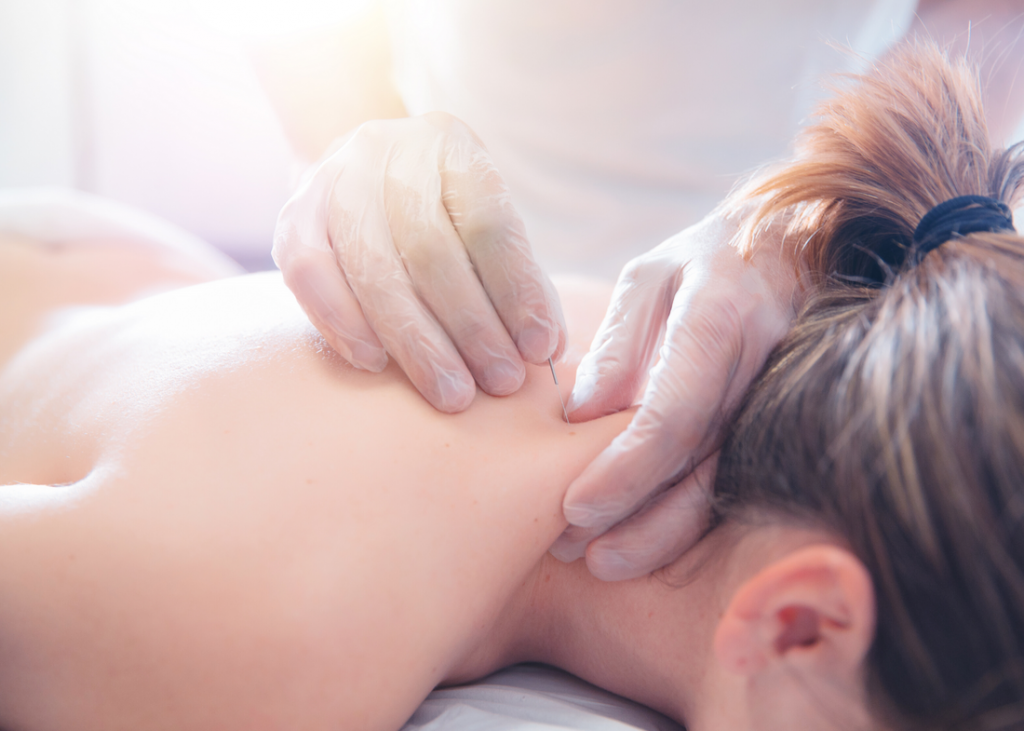|
A growing number of people – from athletes to those with injuries or chronic pain – are starting to learn how dry needles can relieve severe muscle pain and mobility problems. |
Dry needling and trigger point therapy have been used in Chinese medicine and acupuncture for decades, but it’s an increasingly popular drug-free method of treating musculoskeletal pain.
As with acupuncture, we use thin, dry needles – “dry” in the sense that they do not inject anything into the body – that are inserted through the skin into the muscle tissue. Our main focus is on muscle and connective tissue and the attempt to restore mobility.
How does it work?
When muscles become overused or tense, they can develop knotted areas called myofascial trigger points that are irritable and cause pain.
An overused muscle suffers an energy crisis in which the muscle fibers are no longer adequately supplied with blood due to prolonged or inappropriate contraction. Unless it is receiving that normal blood supply, it is not receiving the oxygen and nutrients that allow the muscle to return to its normal resting state.
The tissue near the trigger point becomes more acidic and the nerves become sensitized, making the area sore or painful.
Stimulating a trigger point with a needle will help resume normal blood supply to flush the area and relieve tension. With this tension in the muscles, stinging can also trigger nerve fibers that stimulate the brain to release endorphins – the body’s own “homemade painkillers”.
To locate a patient’s trigger points, we palpate, look for painful, gnarled areas, and perform orthopedic examinations.
Once a trigger point is located, we insert a needle straight into it through the skin. Sometimes we have to move the needle a little to try to create what is called a local twitch response, which is a rapid muscle spasm. This reaction can actually be a good sign that the muscle is responding.
Some patients feel an improvement and change in their pain and range of motion almost immediately after a dry needling session.
It’s important to keep the affected muscles loose by continuing to move them in their new range of motion after the treatment, he adds. After that, pain can occur for 24 to 48 hours.


